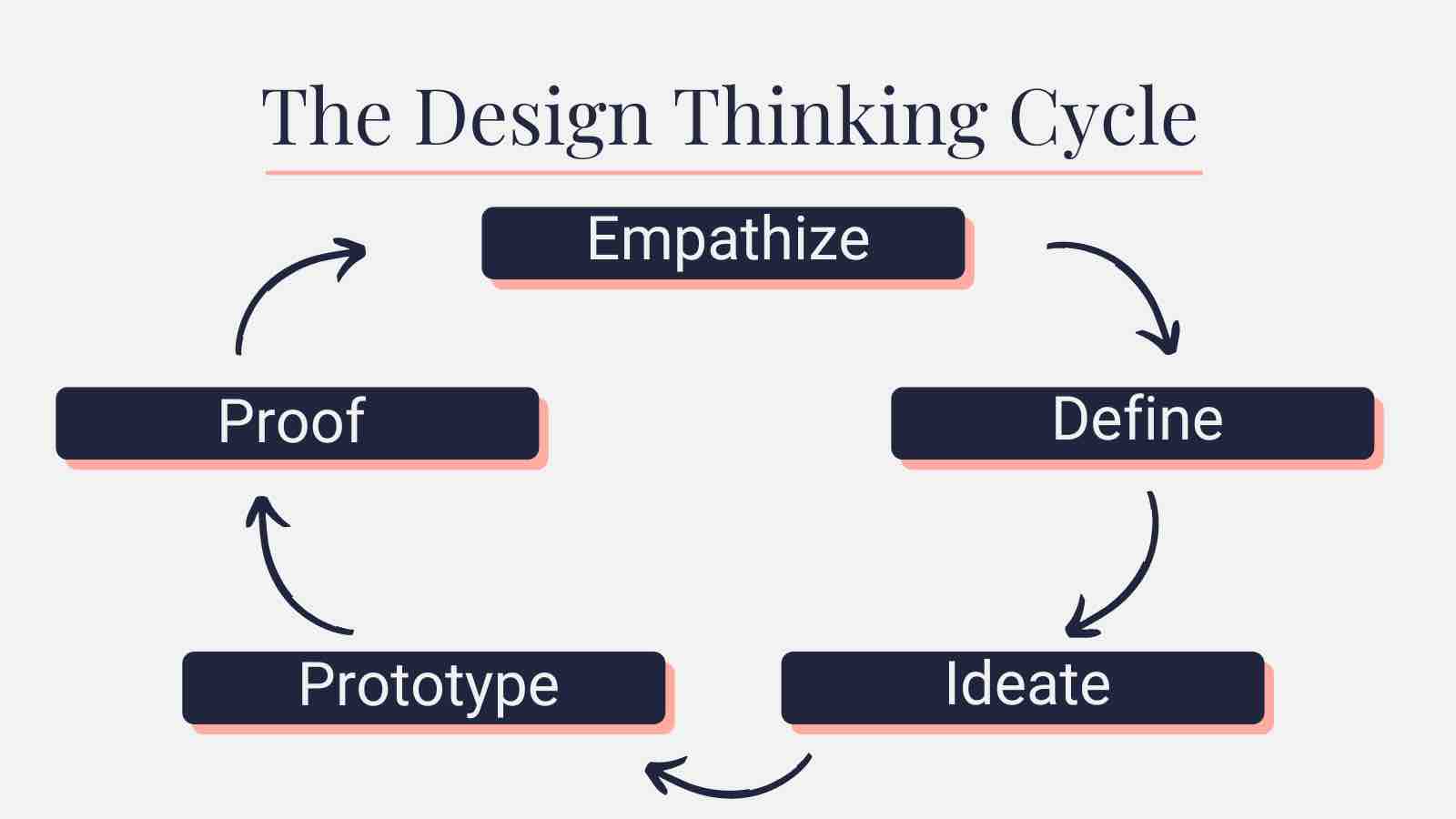At Dockyard, we use design thinking as an interactive process to solve problems.
Design thinking enhances our ability to question and define problems from their initial steps by studying the target user’s needs and challenging assumptions and ideas. That, in turn, lets us create prototypes and test solutions to learn from the results.

Design thinking evaluates designs through a process designed to optimize how a design team applies its time and effort to a project, especially when dealing with uncertainty or unknowns. That process aims to develop empathy with the end users and stakeholders through experimentation.
Depending on what stage we’re at in the design process and our client’s goals, we’ll use different types of tests to validate the design.
Some of the tools we use during this process include:
- Figma (For clickable prototypes and consolidation reports)
- Maze (For task testing and context surveys)
- Pendo (For product feedback)
- Notion (For documentation and notes)
- Loom (For in-person testing and recording)
- FigJam / Miro / Mural (For collaboration)
- Platform Analytics (For data collection)
We use all of those tools at some point in the design process, but for now, we’ll walk through the high-level steps for verifying designs and the ways we use Figma and Maze to ensure we’re building a product designed for our end users.
At the very initial stages, or when dealing with unknowns and assumptions, we use discovery methods like surveys, card sorting, and in-depth interviews based on our defined personas.
Once we’ve defined the main problems and ideated the solutions, we validate them with clickable prototypes in Figma. We run usability sessions with some users to observe their behaviors and how they use the product naturally. Then we’ll use Maze to test new interface patterns and elements to prove they adhere to the customer’s quality standards.
Next, we run user acceptance testing (UAT) of a feasible concept that includes stakeholders’ requested product functions and features. In such cases, we use a Figma clickable prototype and ask users to do a job according to a scenario to give them as realistic an experience as possible.
Like any stage of a project, roadblocks can happen. Sometimes, for example, inter-team disagreements or uncertainty crop up. When that happens, we can use Maze for A/B tests to let users decide which is best and keep their interests at the center of our work.
We’ll also use Maze for card sorting, context surveys, or task testing to get some quantitative data to measure the success of potential solutions.
No matter what stage in the design process we’re at, we always look for improvements. The design team needs real-world data to discover user pain points, unmet product value opportunities, and user flows. A usability test lets us observe users’ behaviors, thoughts, and habits to understand how they’ll use the product in a real-world setting.
Once we’ve completed these steps, we document the results and share them with other stakeholders and teams to review and make changes based on what we’ve learned. We also give our stakeholders a comprehensive overview of how we finalize the design.
Verifying designs throughout the product development process is key to ensuring that the end product is built to benefit the end user the most. Without it, a team runs the risk of designing a product that meets stakeholders’ desires but ignores the intended audience for the product.
Whether you’re starting from square one or need refinements to your existing design, DockYard has the expertise to help. Get in touch today to learn how we can help you reach your goals.


